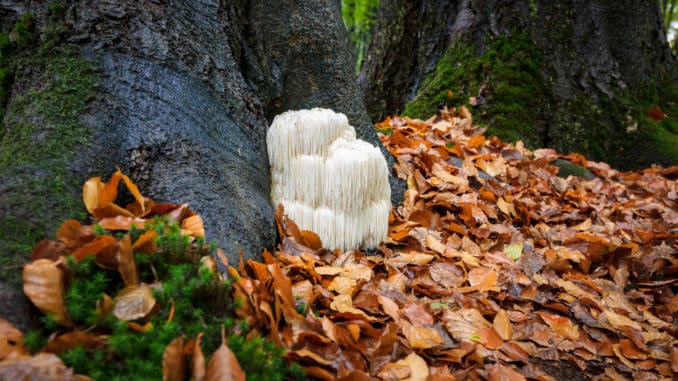
[cmamad id=”22448″ align=”center” tabid=”display-desktop” mobid=”display-desktop” stg=””]
In countries like China and Japan, this natural mushroom is a delicacy… And now scientists show it has incredible health benefits for men…
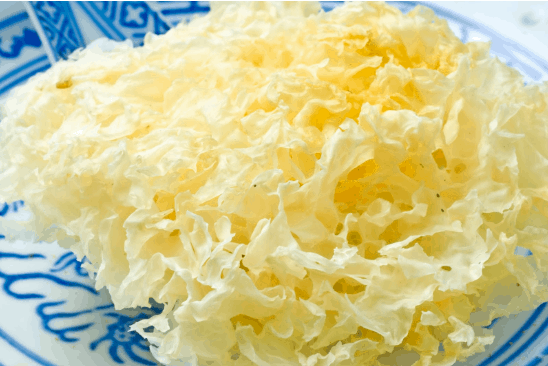
—-Important Message—-
You Won’t Believe What Happened to Me…
In all my years as a health researcher, I never in a million years thought I’d discover something like this…
It has completely changed my life. And my wife’s life too…
This is something I haven’t even told my closest friends about…yet…
Do you have time for a quick story?
I put together a 5-minute video where I reveal the greatest thing that ever happened to me…
———-
New Research Shows This Mushroom Protects Men Against Alzheimer’s
Lion’s mane (Hericium erinaceus) is a species of mushroom used as a cognitive enhancer in some countries.
It’s also used as a food item in countries such as China and Japan.
The mushroom is so named because it bears a superficial resemblance to a lion’s mane.
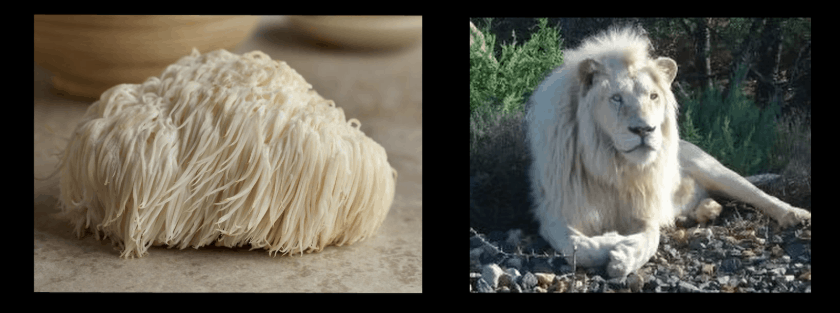
(The mushroom actually looks a bit more like a Komondor dog – the “Hungarian sheepdog.”)
So this is obviously not your average toadstool‑shaped mushroom…
The species is characterized by long hair‑like projections. And it often grows on beech trees.
Although chefs covet the lion’s mane mushroom nearly much as the morel mushroom for its shrimp‑like flavor, my intention is not to talk about food.
Lion’s mane is also unique in that it stimulates nerve growth factor.
Nerve growth factor (NGF) is exactly what it sounds like…
It’s a peptide in the nervous system that can induce growth in nanomolar (tiny) concentrations.
Scientists discovered NGF in the 1950s…
They transplanted rat cells into developing chicken embryos – and the cell line they used just happened to be producing a high amount of NGF.
And this led to the discovery of NGF.
The innervation of the chicken wings surrounding the implanted cells was so noticeably enlarged that it caused the researchers to shift focus…
They switched their focus from researching embryology towards trying to isolate this undiscovered hormone.
NGF powerfully enhances growth and regeneration… But scientists believe it is also required for the survival of nerve cells in vitro.
[cmamad id=”22449″ align=”center” tabid=”display-desktop” mobid=”display-desktop” stg=””]
Nerve growth factor is more than a general growth promoter or inducer of arborization (those treelike things at the ends of nerves).
It can actually direct axonal growth along a concentration gradient.
(This is about the nerve fiber growing to find its target in the developing brain – check out the picture below.)

NGF can elongate nerves more reliably than anything else.
That is its classic function, which you can see in the picture below:

Today, NGF is used experimentally to treat Alzheimer’s disease.
The rationale behind this is the lower concentrations found in postmortem studies, and the pro-memory effects seen in animal studies using NGF.
But NGF is expensive to produce. And it doesn’t readily cross the blood-brain barrier.
So drugs capable of upregulating it are viewed as a better option.
And as a large protein hormone, NGF is largely digested anyway.
So its oral bioavailability is low to nonexistent.
Yet there is a class of chemically related molecules derived from mushrooms that can induce nerve growth factor in the brain – the cyathane diterpenes:

And, of these three, only erinacine is commonly available online.
Erinacines are a class of near‑identical compounds lettered from “A” to “K” – all found in lion’s mane mushroom.
Erinacines are considered to be the active agents, although the hericenone class are sometimes given credit.
“Furthermore, we recently found that cyrneines, which have structural similarities to scabronines, also promoted NGF (nerve growth factor) expression in 1321N1 cells and neurite outgrowth in PC12 cells…”
Besides not resembling other molecules proven to upregulate NGF, studies using both types conclude that the erinacines are more potent than the hericenones.
So, although lion’s mane contains both erinacines and hericenones, the former are primarily responsible for its nootropic effects.

A group of Japanese scientists demonstrated this by administering erinacine A to a group of 10 rats for five weeks.
They raised a control group of rats in parallel without giving them the identical treatment of erinacine A.
At the conclusion of the test period, they killed the rats and analyzed their brains for catecholamines, serotonin, and nerve growth factor.
Using only 8 mg/kg/day (orally), erinacine A increased NGF in the locus coeruleus (a part of the brainstem) by about 10 times.

This is the brain region responsible for synthesizing and distributing two catecholamines: adrenaline and noradrenaline.
The locus coeruleus is highly involved in cognition.
It also shows the characteristic decline (along with acetylcholine receptors) that goes along with aging in general and dementia especially.
“Elucidating the factors that control the activity of these neurons and the effect of noradrenaline in target regions is key to understanding how the brain allocates attention and apprehends the environment to select, store, and retrieve information for generating adaptive behavior.”
These biochemists also analyzed eight brain regions for dopamine, epinephrine, serotonin – and their downstream metabolites.
They found increases in dopamine and its two metabolites ( DOPAC and homovanillic acid), both indicative of a high turnover rate of dopamine.
They also found increases in noradrenaline in the treated rats – an effect not seen in the controls.
This is not surprising, considering the high NGF concentration found in the locus coeruleus. That’s the brain region responsible for producing NGF.
There was no real difference in serotonin or its metabolites between the groups.
And maybe that’s a good thing, considering its reputation.
“Noradrenaline (NA), which is mainly produced in the locus coeruleus, was significantly different between the erinacine A and control groups.”
Using lion’s mane could be justified based on this study alone.
BUT these findings have been verified by other studies.
A similar in vitro rat study using a whole‑mushroom extract reported the same…
And the effects on people are anticipated by the roughly half-dozen studies using human cell lines.
Yet there’s no need for speculation about how these effects translate into real cognitive changes in humans…
Because one study has tested this directly:
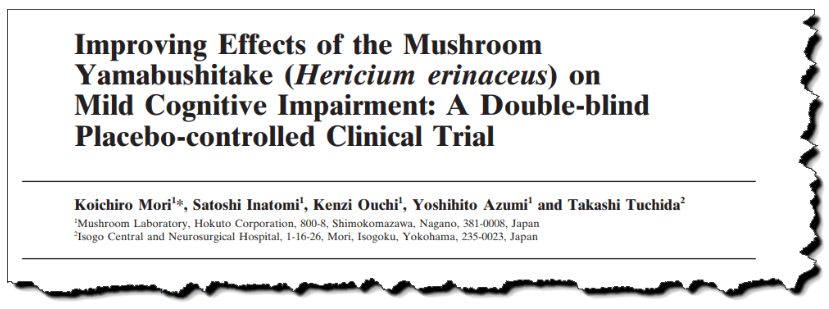
The subjects were 15 Japanese natives with mild cognitive impairment, age‑matched against 15 controls.
They gave all 30 subjects a standardized test (Hasegawa Dementia Scale (HDS‑R)) to ascertain cognitive ability…
And they gave half of them 1 gm of dried mushroom powder per day.
After four months, they tested everybody using the same Hasegawa Dementia Scale. And they tested their blood for any side effects.
Needless to say, this mushroom proved to be free of perceptible side effects, as it’s a traditional food item.
And the only measured difference was in the test scores:

The score of one subject (#7) increased by an entire six points (25%) over and above its initial value.
This is huge, and completely unprecedented for a simple mushroom.
The other studies imply that the erinacines are responsible for this. And they all but rule out the other molecular class found in lion’s mane.
“…the amounts of nerve growth factor secreted into the medium in the presence of erinacines A, B, and C at 1.0 mM were 250.1, 129.7 and 299.1 pg/ml, respectively… These activities were much stronger than that of a known potent stimulator, epinephrine, used as a positive control in the bioassay.”
There has been enough research on the cyathane diterpenes to be certain that they do upregulate NGF.
But there hasn’t been enough to easily determine how this occurs.
The mechanism of action is an open question, yet hints can be gained from the more comprehensive studies:

This study was done using human brain cells, two groups of rats, and four individual types of edible mushroom.
They used whole‑mushroom extracts in three different solvents – so nearly everything found naturally within the mushrooms was included in the assays.
In the NGF assay, they found only lion’s mane to have activity.
So the ability to induce NGF is not a property of mushrooms in general – it’s limited to certain types.
Only lion’s mane and certain species of Sarcodon have been shown to upregulate nerve growth factor.

Not only was NGF released into the media in higher amounts, but the mRNA that encodes it was increased as well.
This implies that the erinacines were operating genetically, most likely on nuclear receptors – considering their potency and reliability.
Incidentally, this study also showed that hericenones – the other molecular class characteristic of lion’s mane – had no effect.
“The results obtained indicate that H. erinaceus has NGF-inducing activity, but that its active compounds are not hericenones.”
Considering that erinacines have been shown to do this at low concentrations and are also similar to other inducers, it would be easy to disregard the hericenones.
This confusion came about because lion’s mane extracts were shown to induce NGF in the days before its constituents were tested in isolation.
Dr. Hirokazu Kawagishia claimed in a 1991 article that hericenones C to E were “stimulators of nerve growth factor” – despite presenting no evidence…
“…we firstly examined the effects of ethanol extracts of four edible mushrooms: Hericium erinaceus (Yamabushitake), Pleurotus eryngii (Eringi), Grifola frondosa (Maitake), and Agaricus blazei (Himematsutake), on nerve growth factor (NGF) gene expression in 1321N1 human astrocytoma cells [a brain cell line].”
“Among the four mushroom extracts, only H. erinaceus extract promoted NGF mRNA expression in a concentration-dependent manner.”
And if it’s not the hericenones doing this, it is most certainly the erinacines.
This is important – because there are only two things known to increase NGF mRNA to such an extent: androgens and thyroid hormone.
One of these resembles erinacine A…

In the early days of its discovery, NGF was associated with salivary glands.
Those investigators came across some evidence suggesting that both androgens and thyroid hormones increase the size of salivary glands.
Because of what they knew about the effects of NGF, they decided to test these hormones on rats and observe their NGF levels.
These two hormones radically increased the levels of NGF in both males and females.
This was especially notable on day 21:
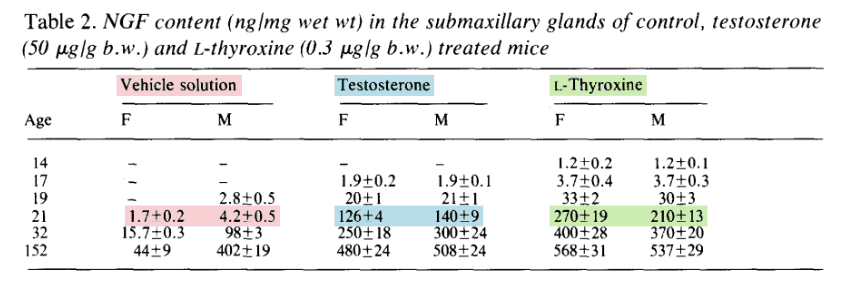
The effects of testosterone and thyroxine were greater in females, probably because they had less testosterone to begin with.
“…the synthesis of this protein molecule is under the control of testosterone and of thyroxine, and… The NGF protein content is about tenfold higher in male than in female mice, remained a puzzling and unexplained finding for about three decades.”
In fact, castration of males yields female‑typical concentrations of NGF.
Yet, lucky for those mice, normal male levels were re‑established upon thyroxine treatment.
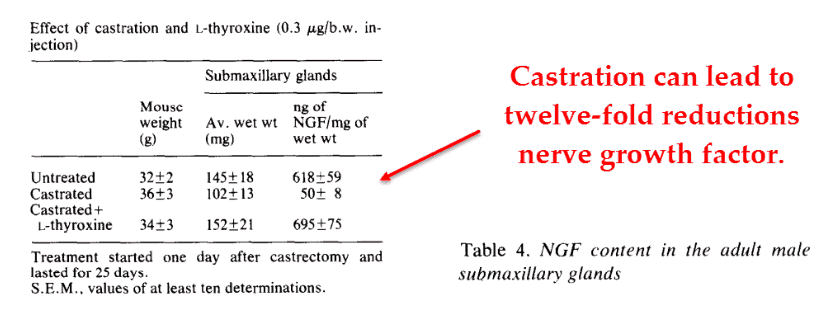
But this is not to say that females are invariably low in NGF… They have thyroid hormone to serve this function.
However, this study does imply that low androgen levels concomitant with hypothyroidism would lead to very poor NGF factor concentrations.
This could have implications for post‑finasteride syndrome, especially the impotence often resulting from its use.
Nerves running from the spinal cord to the penis are strengthened by androgens…
And NGF could have something to do with that.
There are other rationales that suggest erinacines are working through the androgen receptor.

This recent study investigated how NGF responds to scabronines and cyrneines.
These are two of the “molecular first cousins” of the erinacines in lion’s mane.
They used a computer program to search for molecules structurally similar to cyathane diterpene.
Eventually, this yielded one named cyclo‑androstanedione (CAD).
“To obtain the cyathane-like compounds, we first screened in silico, then we found a synthetic compound…structurally related to scabronines and cyrneines. Although any pharmacological effect of CAD has not been reported, it seems that CAD may cause neurotrophic factor production because of the structural similarity to scabronines and cyrneines.”
We’ve left some details out of that quote, but this is identical to natural androstanedione in almost every way.
Cyclo‑androstanedione has the same number of carbon atoms as androstanedione (an androgen).
The only difference is the extra bond found between the #5 and #19 carbons.
Jolkinolide B is a natural plant compound also reported to induce NGF.
This phytosterol is more similar in structure to androstanedione than erinacine A, yet this is also suggestive.
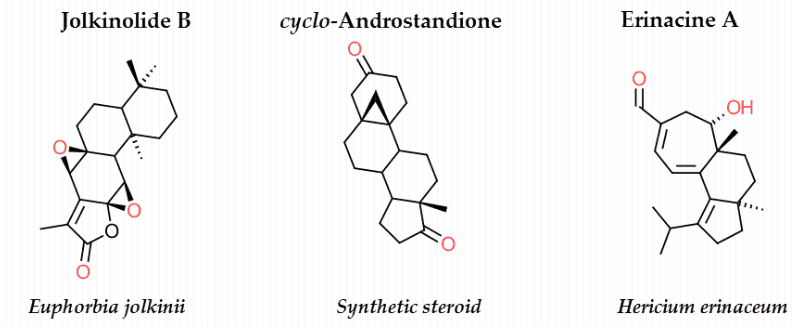
Certainly, erinacine A is more similar to androgens than to thyroid hormone, the other classic inducer of NGF.
It is also more similar than designer androgens such as enobosarm.
We’ve known since 1980 that androgens transcribe NGF.
So it probably goes without saying that cyclo‑androstenedione (CAD) does this in spades…
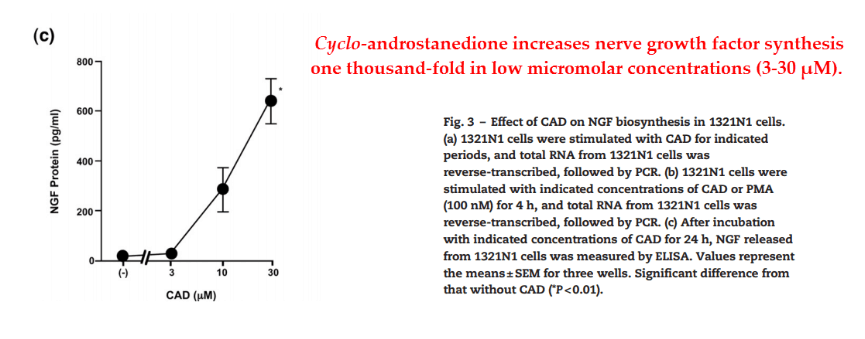
They also found no increase in “second messengers” such as cyclic‑AMP, inositol triphosphate, or calcium ions…
And this implies that this effect was not mediated by membrane receptors.
Steroid receptors don’t need second messengers because they are the messenger.
They interact directly with DNA to induce transcription.
So, yes, calcium ions and cyclic‑AMP (cyclic adenosine monophosphate) can increase NGF to a degree. And probably the same way that catecholamines do it.
But they can’t upregulate it as reliably and strongly as androgens can in high concentrations.
I’ve seen no evidence of erinacines working through a second messenger. And that is even more indication of nuclear activity.
And, moreover, they both upregulate c‑Fos (a marker for neuron activity) – a classic target of androgens.
The mRNA that encodes c‑Fos was upregulated by cyclo‑androstenedione in this study.
This also happened with erinacine A in the study above.

They also demonstrated that cyclo‑androstenedione (CAD) could ameliorate scopolamine‑induced memory impairment in mice…
And even almost prevent it entirely.
And the control group – given cyclo‑androstenedione but not scopolamine – also showed improvement.
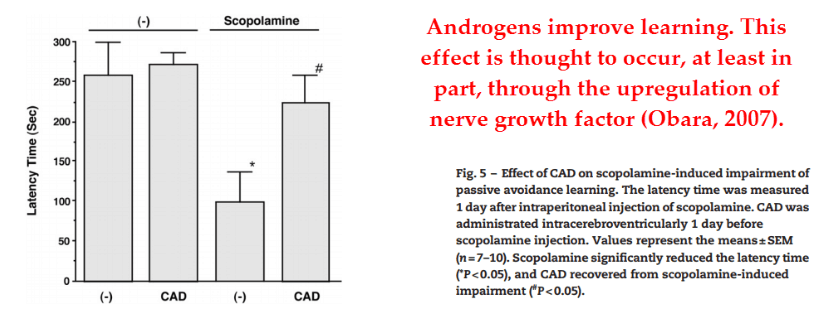
So we have many parallels between erinacine A and androstanedione…
Both of these molecules:
(1) Dramatically increase the mRNA encoding nerve growth factor
(2) Increase the growth factor itself
(3) Increase mRNA encoding c‑Fos
(4) Enhance memory and cognition in rats
(5) Do it all without influencing second messengers such as calcium ions or cyclic‑AMP
If this is truly how lion’s mane does what it does, taking it would not be identical to taking endogenous testosterone.
The solubilities and dispositions of the two are likely different.
Since there’s no pharmacokinetic study on erinacines, it’s hard to know for certain.
But, on account of the rodent studies, it seems that erinacines have a high brain uptake…
Possibly making them “an androgen analog specific for the brain.”
And if you were to take the human study by Koichiro Mori at face value, it would be hard to deny that these effects do translate into cognitive improvement.
That would be just what you’d expect from the in vivo rat study demonstrating increased brain catecholamines and NGF…
And these are two things consistently shown to enhance cognition through hundreds of studies.
You can cook lion’s mane mushrooms in butter and eat them whole or boil them in hot water.
And lion’s mane extract is available as a nutritional supplement in a bunch of different forms.
—-Important Message About Preventing Alzheimer’s—-
This Cheap White Powder Prevents Alzheimer’s and Fights Cancer
Can’t get your hands on any lion’s mane?
Not to worry – because I’ve discovered this cheap white powder that eliminates the heavy metals that cause Alzheimer’s from the brain …
It also oxygenates the tissues in the body, which makes the immune system stronger and more resistant to cancer.
This white powder is all-natural, safe, and costs less than a dollar at the store.
And you probably already have some in your kitchen right now.
Here’s the cheap white powder that protects men against Alzheimer’s disease and even cancer.
———-

- [1] Shimbo, Mari "Erinacine A increases catecholamine and nerve growth factor content in the central nervous system of rats." Nutrition research (2005) https://www.sciencedirect.com/science/article/pii/S0271531705001041
- [2] Mori, Koichiro. "Improving effects of the mushroom Yamabushitake (Hericium erinaceus) on mild cognitive impairment: a double‐blind placebo‐controlled clinical trial." Phytotherapy Research (2009): https://onlinelibrary.wiley.com/doi/abs/10.1002/ptr.2634
- [3] Mori, Koichiro. "Nerve growth factor-inducing activity of Hericium erinaceus in 1321N1 human astrocytoma cells." Biological and Pharmaceutical Bulletin (2008) https://pdfs.semanticscholar.org/1844/ca519d6aada422576839c40c1bd3afc1de7b.pdf
- [4] Levi-Montalcini, Rita. "Comparative studies on testosterone and L-thyroxine effects on the synthesis of nerve growth factor in mouse submaxillary salivary glands." Experimental cell research (1980) https://www.sciencedirect.com/science/article/pii/0014482780901834
- [5] Obara, Yutaro. "5, 19-cyclo-9β, 10ξ-androstane-3, 17-dione promotes neurotrophic factor biosynthesis in 1321N1 human astrocytoma cells and improves passive avoidance learning impairment." Brain research (2007) https://www.sciencedirect.com/science/article/pii/S0006899307023797
- NGF gene - Genetics Home Reference - NIH https://ghr.nlm.nih.gov/gene/NGF
- Nerve Growth Factor | The Embryo Project Encyclopedia https://embryo.asu.edu/pages/nerve-growth-factor
